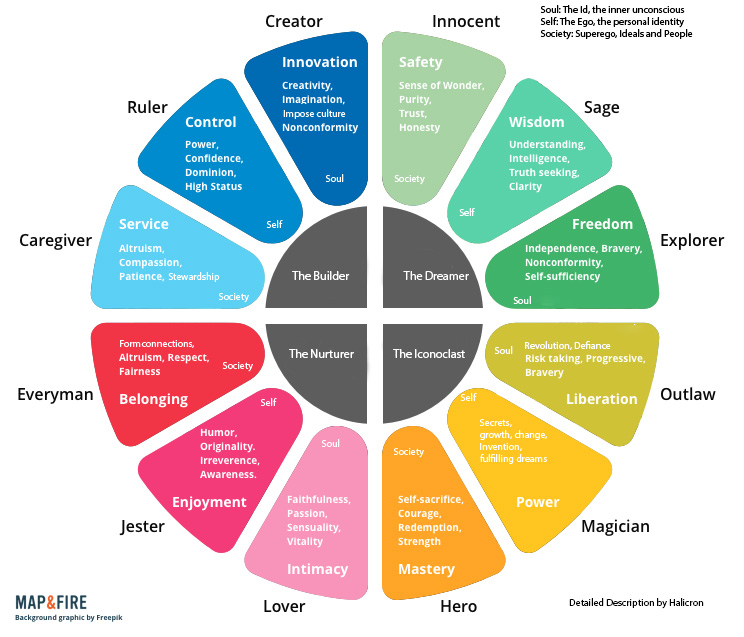A Writer's Guide to Jungian-style Archetypes for Characters
-
These aren't classical psychological traits but rather a way of sorting biases and preferences for characters. We've been limited a little by archaic structures like the 3x3 alignment chart, which can struggle with nuanced motivations and tends to create caricatures of alignments rather than loose sortings. This image is very much not about the relativity of good and evil, though most of the listed traits are positive ones. For a description of the 'dark animus' motivations for villains or antagonists, click through to the Imgur link below and read the longer descriptions.
When trying to find someone's voice, especially with original characters, you might start by asking yourself two questions:
-
Are they driven by their Id (instincts and desires), Ego (sense of self and inward focus), or Super-Ego (relating to others or society?)
-
Do they want to leave the world a changed place? Are they idealists in search of abstractions? Do they want to create or enforce order? Or do they form personal connections with individuals?
No person is all things to all people, of course. To borrow Star Wars, Luke (in the original trilogy) starts out as an Explorer. Later, he takes on aspects of the Outlaw as he joins the Rebellion and fights the Empire. In the Return of the Jedi, he becomes a Hero to fight Darth Vader personally.
Hopefully this graphic and the attached guide in the link on Imgur helps provide people a useful tool for evaluating motivations and desires.

-